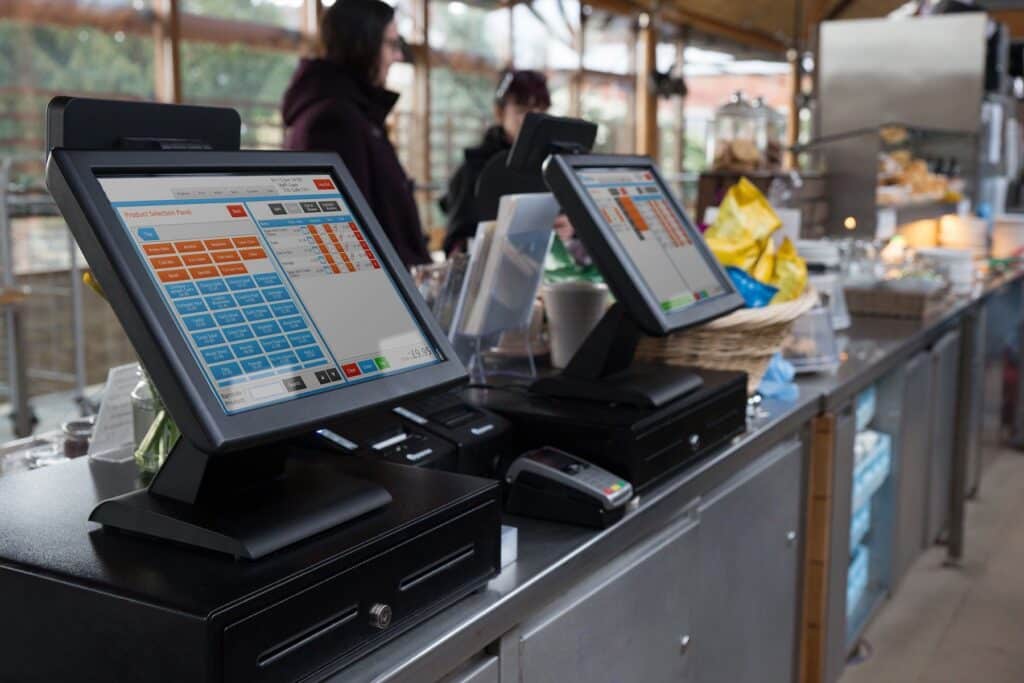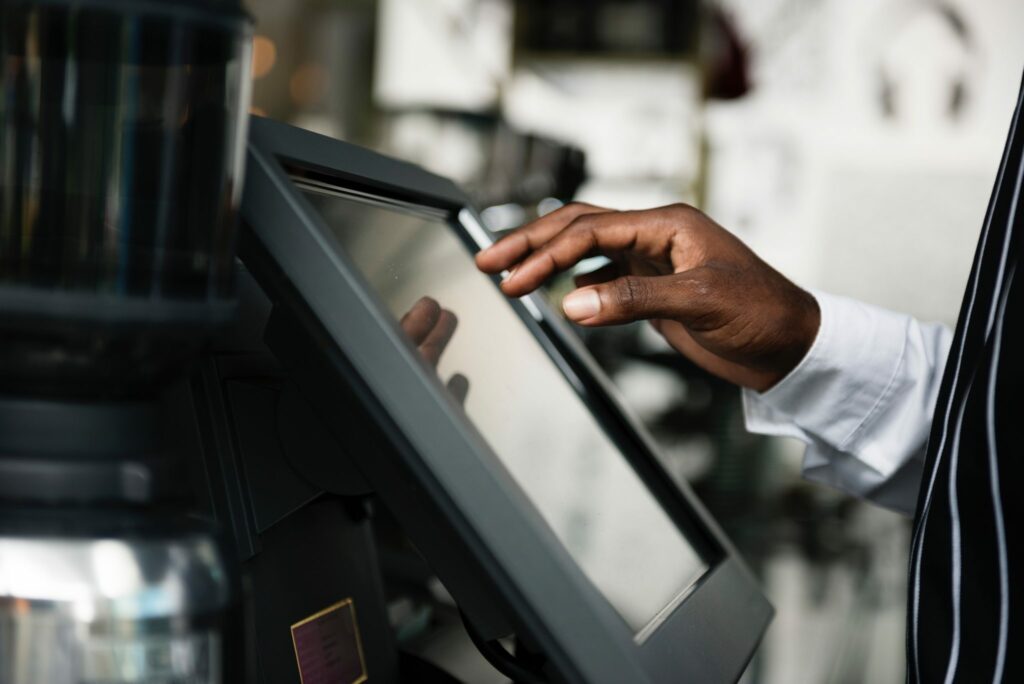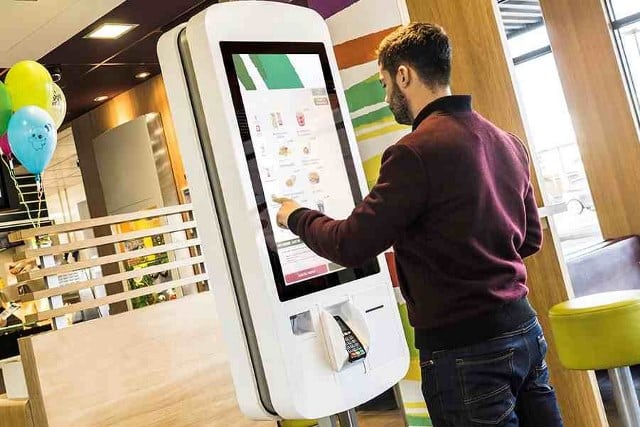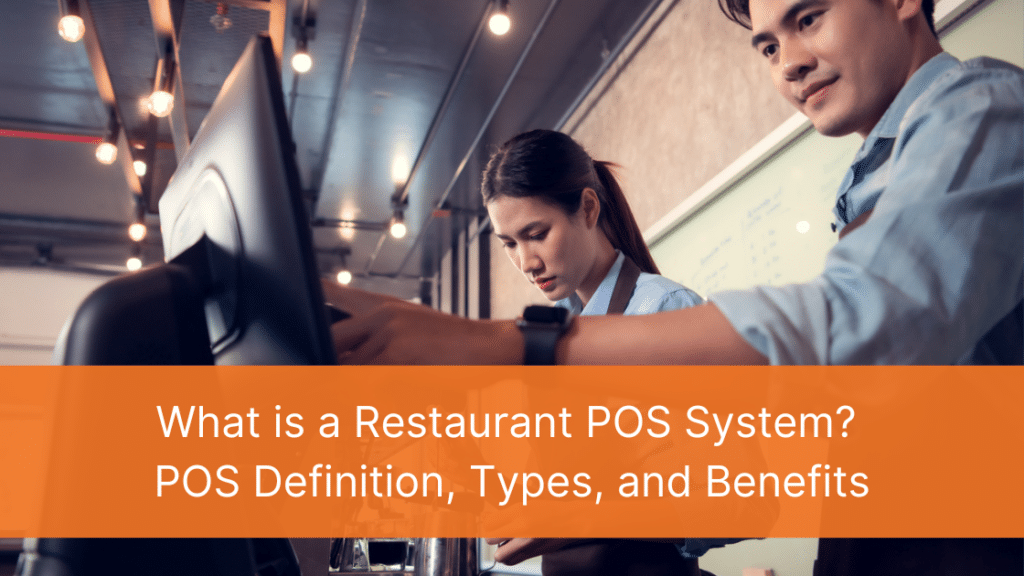A seamless restaurant Point of Sale (POS) and payment processing experience can make all the difference in shaping a customer’s perception of your restaurant. A good restaurant POS system not only ensures smooth and accurate transactions but also enhances operational efficiency and customer satisfaction. On the other hand, a bad POS experience can lead to delays, errors, and frustration for both customers and staff.
Let’s explore the key factors that differentiate a good restaurant POS system from a bad one and discuss essential features that can elevate your restaurant’s POS system.
What is a Restaurant POS System?
A Point of Sale (POS) system is a critical component of a restaurant’s operations, serving as the central hub for processing transactions, managing orders, and facilitating various business functions. It combines hardware and software to create a seamless and efficient platform that enables restaurants to handle sales, track inventory, generate reports, and enhance the overall customer experience.
Hardware Components of a POS System
The hardware components of a POS system typically include:
Terminal or Device
This is the main point where orders are entered and transactions are processed. It can be a dedicated terminal, tablet, or even a smartphone.

Cash Register or Cash Drawer
This component securely stores cash and provides a physical point for cash transactions.
Payment Processing Equipment
Payment processing equipment includes devices such as credit card readers, NFC (Near Field Communication) terminals, and barcode scanners, allowing for various payment methods to be accepted.
Receipt Printer
This device prints customer receipts for transactions, providing a tangible record of the purchase.
Software Components of a POS System
The software components of a POS system provide the functionality and tools needed to run a restaurant efficiently. Key software components include:
Order Management
The POS software allows restaurant staff to enter and modify orders, including customizations, special requests, and table assignments. It ensures accurate order transmission to the kitchen or bar, minimizing errors and improving order fulfillment.
Payment Processing
The POS system integrates with payment gateways and processors, enabling secure and efficient transaction processing. It supports various payment methods, including credit cards, debit cards, mobile wallets, and gift cards.
Inventory Management
POS systems often include inventory management features that track and manage stock levels in real-time. This functionality helps prevent stockouts, reduce waste, and optimize purchasing decisions by providing insights into ingredient usage and forecasting.
Reporting and Analytics
POS systems generate comprehensive reports and analytics that offer insights into sales performance, customer trends, menu profitability, and more. These reports assist in making data-driven decisions to improve operations, optimize menu offerings, and drive business growth.
Customer Relationship Management (CRM)
Some POS systems integrate CRM capabilities, allowing restaurants to capture customer data, track customer preferences, and manage loyalty programs. This enables personalized experiences, targeted promotions, and better customer retention.
Integration with Other Systems
A robust restaurant POS system seamlessly integrates with other critical systems, such as accounting software, payroll systems, online ordering platforms, and loyalty programs. This integration streamlines operations, eliminates manual data entry, and ensures accurate and up-to-date information across the business.
A restaurant POS system combines hardware and software components to create an all-in-one solution that enables restaurants to process transactions, manage orders, track inventory, generate reports, and improve the overall customer experience. With its various features and functionalities, a POS system streamlines operations, enhances efficiency, and provides valuable insights for making informed business decisions.
Types of Restaurant POS Systems
In the dynamic landscape of restaurant technology, various types of restaurant POS systems have emerged to cater to the diverse needs of different establishments. Each type offers unique features and benefits, enabling restaurants to choose the solution that best aligns with their operational requirements and growth strategies. Let’s explore the different types of POS systems commonly found in the restaurant industry.
Traditional POS System
The traditional POS system consists of hardware and software installed on-premises, typically with a server-based architecture. It includes components such as a terminal, cash register, receipt printer, and dedicated servers for data storage and processing. This type of POS system requires a local network and is often utilized in larger restaurants or establishments with complex operations.
Traditional POS systems offer robust functionality, extensive customization options, and are known for their reliability and security.

Touchscreen POS System
Touchscreen POS systems utilize intuitive touch-based interfaces, replacing physical keyboards and buttons with interactive screens. These systems offer user-friendly and visually appealing interfaces that make order entry and management more efficient.
Touchscreen POS systems are often preferred by quick-service restaurants, cafes, and bars due to their ease of use, speed, and the ability to customize the layout to suit specific workflows.
Dedicated Server POS System
A dedicated server POS system operates on a centralized server located within the restaurant premises. This setup provides greater control over data storage, security, and processing.
Dedicated server systems are suitable for establishments with high transaction volumes, complex menu configurations, and specific customization needs. These systems offer robust offline capabilities, ensuring uninterrupted service even in the event of a network failure.
Cloud-Based Restaurant POS System
Cloud-based POS systems have gained popularity in recent years due to their flexibility, scalability, and accessibility. They operate on remote servers hosted in the cloud, eliminating the need for on-premises servers.
Cloud-based systems offer real-time data syncing across multiple devices, allowing staff to access the POS system from anywhere with an internet connection. These systems are particularly beneficial for small to medium-sized restaurants, food trucks, and multi-location establishments, as they provide cost-effective solutions with automatic updates, data backup, and integration with various third-party applications.
Multi-Channel POS Systems
As the restaurant industry continues to evolve, embracing multiple sales channels has become essential for meeting customer demands and staying competitive. Multi-channel restaurant POS systems are designed to streamline operations across various sales channels, providing a unified platform for managing orders, payments, and inventory.
Here are some of the most common components of a multi-channel POS system.
Mobile Point of Sale (mPOS):
Mobile point of sale systems leverage the power of smartphones or tablets to enable staff to take orders and process payments directly at the table or anywhere on the premises.

Self-Service POS Systems:
Self-service POS systems empower customers to place their own orders, customize their meals, and even make payments, eliminating the need for staff intervention.
Online Payment Systems
Online payment systems enable restaurants to accept digital payments through their website or mobile app. Customers can conveniently place orders, select delivery or pickup options, and securely complete transactions online.
To learn more about multi-channel POS systems and their benefits, check out our article: Multi-Channel POS Systems: Components and Benefits
Each type of POS system has its own advantages and considerations, and selecting the most suitable one depends on the unique needs of the restaurant. It is crucial for restaurant owners and operators to assess their requirements, consider the scale of operations, budget constraints, and growth plans when choosing the type of POS system that will best support their business goals.
The Benefits of a Quality Restaurant POS System
A quality restaurant POS system offers several benefits to restaurant owners, managers, staff, and customers, and is absolutely key to the success of your restaurant business. Here are some of the key advantages:
Enhanced efficiency
A quality restaurant POS system automates various tasks, such as order taking, payment processing, and inventory management. This streamlines operations, reduces manual errors, and improves overall efficiency, allowing staff to focus more on providing excellent customer service.
Enhanced customer experience
A quality POS system speeds up order processing, reduces wait times, and improves order accuracy. It also enables personalized service by storing customer preferences and order history. These factors contribute to a better dining experience, leading to increased customer satisfaction and loyalty.
Improved order accuracy
With a POS system, orders are entered directly into the system, minimizing miscommunication between staff and the kitchen. This reduces order errors, ensures accurate preparation, and enhances customer satisfaction.
Increased table turnover
A POS system with table management capabilities enables efficient table turnarounds. This is especially useful in more full-service restaurants and bars, where staff can easily track table status, manage reservations, and optimize seating arrangements, reducing wait times and increasing the number of customers served. But it also has some application in quick-service or fast casual restaurant businesses, where faster ordering times can also contribute to the average amount of time a customer stays in the store.
Simplified menu and pricing management
Updating menus, prices, and item descriptions can be done easily with a restaurant POS system. Changes can be made centrally and reflected across all devices, ensuring consistency and avoiding confusion for both staff and customers.
Inventory control and cost management
POS systems help track inventory levels in real time, providing insights into ingredient usage and reducing the chances of running out of stock. This enables effective inventory management, minimizes waste, and controls food costs.
Accurate sales and performance reporting
POS systems generate detailed reports on sales, revenue, and various performance metrics. These reports provide valuable insights into business trends, popular items, and peak hours, helping owners and managers make informed decisions to improve operations and increase profitability.
This is especially useful when used across multiple locations, helping to ensure the right data-driven decisions when considering the entire restaurant business.
Integration with third-party platforms
Many restaurant POS systems offer integrations with online ordering platforms, delivery services, loyalty programs, and accounting software. This allows for seamless data synchronization, reduces manual entry, and provides a better overall customer experience.
Secure payment processing
Restaurant POS systems employ robust security measures to protect sensitive customer payment information. They comply with industry standards and encryption protocols, ensuring secure transactions and reducing the risk of data breaches, which can cause major problems for any growing restaurant business.
Scalability and adaptability
A quality POS system can accommodate the needs of different types and sizes of restaurants, whether it’s a small cafe or a large multi-location establishment. They are often customizable and can be scaled up as the business grows or modified to meet specific requirements.
Overall, a quality restaurant POS system optimizes operations, improves customer service, provides valuable insights, and contributes to the overall success and profitability of a restaurant.
A Restaurant POS System Works Best with Quality Restaurant Management Software
There are plenty of features built into modern restaurant POS systems, but even the best system can’t satisfy all your restaurant management needs. A quality POS system is a key component in gathering sales and financial data, managing inventory, and driving purchasing decisions, but it’s still just one piece of the puzzle. You can get the most out of your restaurant POS system when you pair it with a world-class restaurant management software.
A restaurant POS system and restaurant management software can work together to create a comprehensive solution for efficiently running and managing a restaurant. By integrating your POS system with a proven and efficient restaurant management software like SynergySuite, you’ll place your restaurant business in a prime position to maximize your profits and reach new heights.
Check our integrations page to see if your restaurant POS system already integrates with SynergySuite. To learn more about how SynergySuite can help you make the most out of your POS system, request a demo today.





